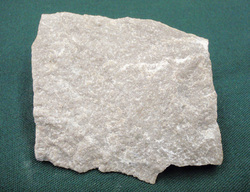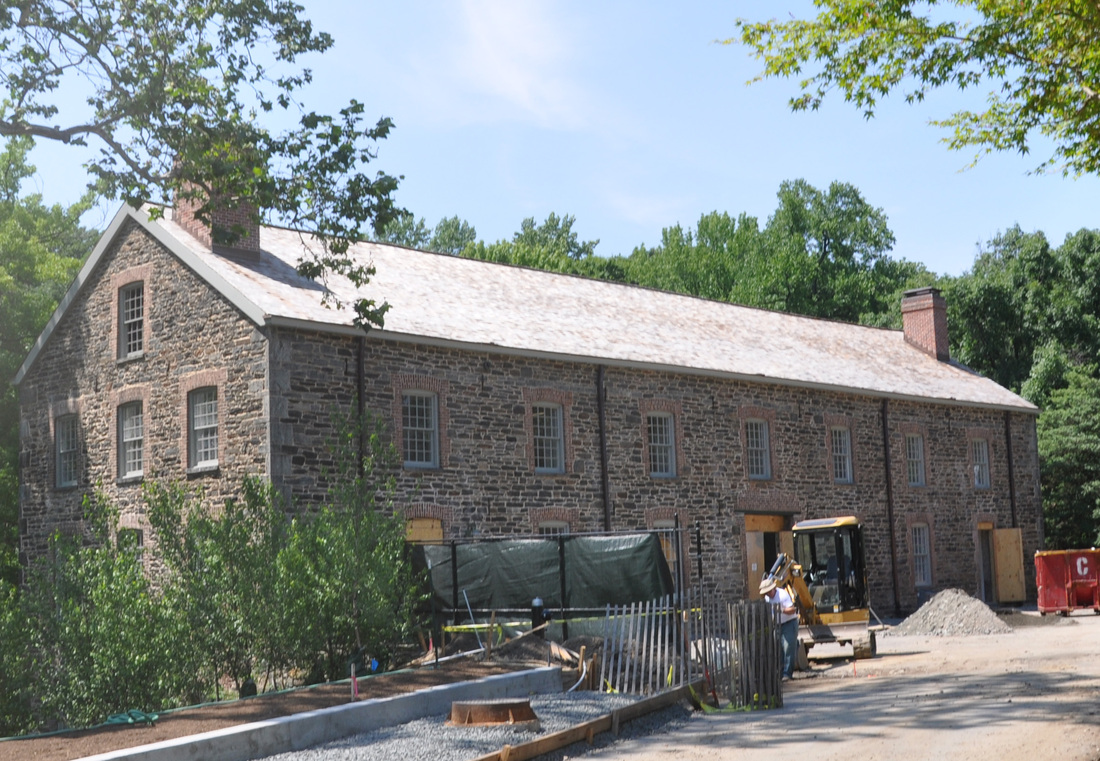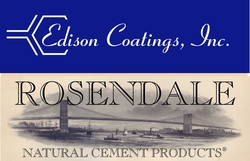Edison Coatings custom-matched and manufactured lime repointing mortar for the NY Botanical Gardens Stone Mill, matching the 1840 original.
|
LIME
Lime is the oldest of the masonry binders, its use dating back to ancient times. Lime has been used in multiple different forms and varies chemically, depending on the source of the limestone or other materials from which it is produced. Edison Coatings offers all of the major varieties of lime for use in mortars, plasters and renders. |
HIGH CALCIUM vs. DOLOMITIC LIME
In North America, the limestone from which building lime is most frequently made is high in Magnesium Carbonate. The highest magnesian limes are classified as dolomitic. Dolomitic limes generally offer high water retention and plasticity without the need for extended slaking in putty form. They also produce higher strengths than high calcium limes, which are more typically found in Europe. Ornamental plastering, however, is generally performed using High Calcium Lime Putty that has been aged for several months. This material provides a workability profile that plasterers strongly prefer. |
LIME PUTTY vs. HYDRATED LIME
In the lime production process, water is added to burnt ("calcined") limestone to produce hydroxides of calcium and magnesium. If exactly the required amount of water is used, a fine powder is formed, designated as Hydrated Lime. If an excess of water is used, a fluid paste is formed, designated as Lime Putty. Lime putty based on high calcium lime, aged for at least 4 months in putty form, is favored by decorative plasterers for its unique working characteristics. Hydrated Lime is easier and less costly to incorporate, transport and store, and dolomitic hydrates are most frequently used for masonry mortars and stuccos. |
HISTORY OF USE
Lime was most often used as a stand-alone binder in North America in the period up to the mid-19th Century. Its use continued well into the 20th Century, however, by which time it had become more common to combine it with Portland Cement. It was also often combined with Natural Cement in the 19th and early 20th Centuries. Hydrated Lime powder, the most commonly used lime today, did not become widely available until the early 20th Century. Its use and benefits were known and understood as early as the 1830's, however. Traditionally, lime was sold in the form of Quicklime, the basic burned limestone in pebble form, and this was slaked on the job site to make lime putty. While some continued the European practice of aging the slaked quicklime for several months, there is ample evidence that in North America "hot mixes" of freshly slaked quicklime were widely used. Quicklime is a hazardous material under current definitions and slaking is a fire code violation in some municipalities. |
AVAILABLE PRODUCTS
LP20, LP20M Lime Putty and Lime Putty Mortars Spec Joint 46L Hydrated Lime Mortars
|




